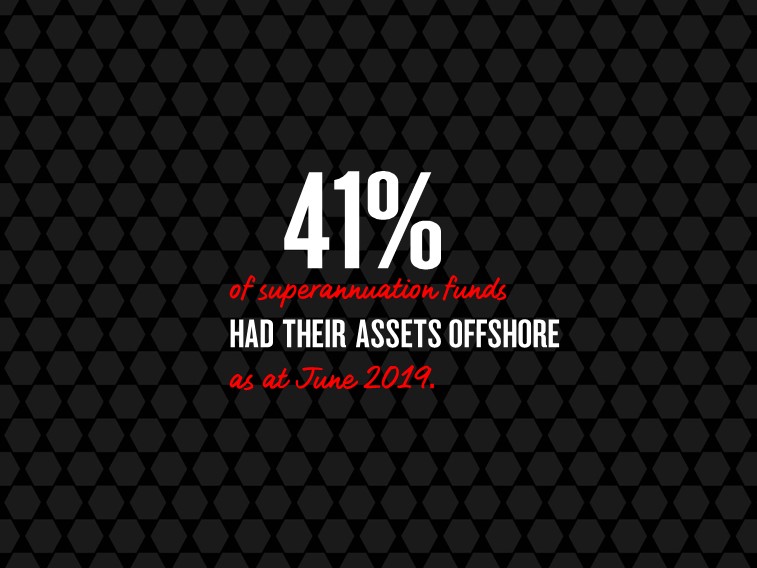On a seasonally adjusted basis, the NAB Online Retail Sales Index recorded a drop in growth in July


Insight
Our 9th biennial survey – the only survey of its kind to examine hedging techniques of Australian super funds – captures their shifting priorities in this rapidly changing landscape.

The Australian superannuation fund industry continues to undergo significant changes. A number of mergers have taken place since our last survey and more are on the horizon as funds respond to the changing regulatory environment, pressures to achieve scale and a desire to improve outcomes for members. In 2019, we expanded the survey to include 61 funds, covering $1.82 trillion of assets under management (AUM).
Superannuation funds are increasingly investing offshore and a strong theme emerging from the 2019 survey was that funds plan to continue this trend as they seek further diversification and attractive returns. The survey found that superannuation funds had on average 41% of their assets offshore as at June 2019.
When asked about future allocations, 72% of respondents indicated they plan to boost the share of their investments in international assets over the next two years. In particular, funds indicated they are likely to increase their relative allocation to unlisted international assets, such as private debt, infrastructure and real estate.
As funds increasingly boost their exposure to offshore assets, they’re running a higher level of foreign currency exposure. This is largely because funds overall are hedging less of their international equity exposures than they were two years ago.
The average hedge ratio applied to international equity exposure has fallen to 29% in 2019 from 39% in 2017 as funds are increasingly preferring to take a more dynamic approach to hedging strategy, allowing them to be more responsive to market conditions, such as a perceived large undervaluation or overvaluation of the Australian dollar.
Despite increasing allocations to emerging markets in recent years, a majority of funds (58%) don’t hedge the currency exposure on their emerging markets equity holdings.
Of those funds that have indicated an element of hedging, 82% are hedging with developed market proxies, while only 18% hedge to the underlying asset exposure, typically the MSCI All Country World Index (ACWI).
Hedging is more common for international fixed income exposures however, with 50% of funds fully hedging their exposure to this asset class.
A major change in the 2019 survey is a seismic shift in thinking away from traditional hedge ratios, with many funds preferring to instead target a desired percentage of foreign currency exposure. The survey found that 57% of funds now think of currency in terms of a desired foreign currency target rather than a hedge ratio. The shift reflects a trend toward funds wanting to view currency risk using the same lens as they view other asset allocation decisions.
Those funds that retain a traditional hedge ratio, representing 38% of funds surveyed and weighted to smaller funds and retail funds, have on average a target hedge ratio of 28%. This is a sizeable reduction from the 2017 survey where the average hedge ratio was 39%.
This reduction likely reflects the downtrend in the Australian dollar, from above 80 US cents at the time of the 2017 survey to nearer 70 US cents in 2019, with an expectation the currency could fall further.
There was also clear feedback from respondents to the survey that running a higher foreign currency exposure was seen as a cost- effective way to protect investment portfolios from a deterioration in risk sentiment.
Another consistent finding of the survey was that internal investment teams are now playing a much more influential role in setting the strategy for currency decisions.
Medium and larger sized funds have been building investment capability and these teams are more influential than ever in currency decisions.
Want more insights from the survey? Request a copy of the full survey findings.
Download a PDF version of the summary
© National Australia Bank Limited. ABN 12 004 044 937 AFSL and Australian Credit Licence 230686.